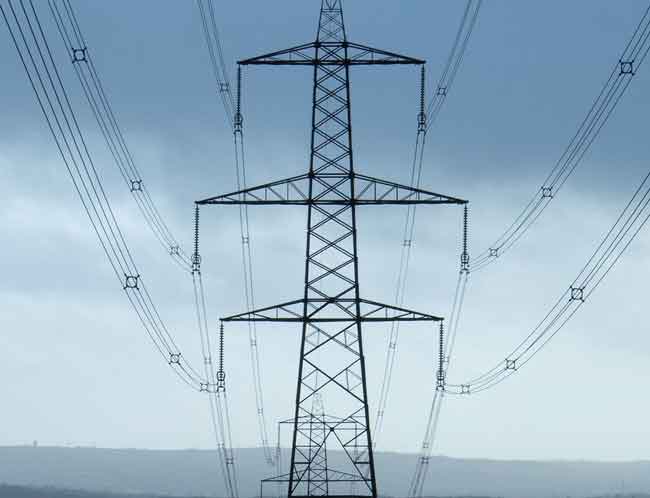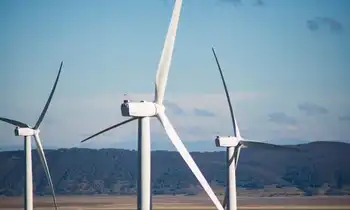Haida divided over wind power development
It lies adjacent to the site of a proposed $2-billion energy project, and until recently, the plan to build Canada's first offshore wind farm in Hecate Strait, near the northeastern tip of the Queen Charlotte Islands, seemed to have strong support from the Haida.
In August, the Haida governing body, the Council of the Haida Nation, endorsed the NaiKun Wind Energy Group Inc. project by signing an agreement to acquire a 40-per-cent share for about $240-million, contingent on environmental approvals and a loan from the federal government.
But concern has spread through native communities on the islands (also called Haida Gwaii). People are worried about debt — and the possible environmental damage 110 wind turbines might cause to Rose Spit and its surrounding waters.
Two petitions are in circulation, one calling for a moratorium on the independent energy project, and another demanding the council put the proposed investment deal to a general vote by December 25.
Just recently, the NaiKun Kiigawaay, a clan that claims Rose Spit as ancestral lands, joined the fight by releasing a letter to NaiKun Wind Energy Group complaining that the project threatens the most sacred site in Haida legend.
"Our history has been passed down from generation to generation and this is our birthplace," states the letter, signed by Elvis Davis, a spokesman for the clan, and Sam Davis, hereditary leader of the NaiKun Kiigawaay.
"This sacred area... should be protected under religious claims," they write.
According to the Haida story of creation, the first humans climbed out of a clam shell on the beach at Rose Spit. That scene is captured in a famous sculpture, Raven and the First Men, by the late Haida artist Bill Reid.
The NaiKun Kiigawaay letter says Rose Spit has long been a rich food source for the Haida Nation, and it raises concerns about the impact of the wind farm, which would be built 20 kilometres offshore, over Dogfish Bank. "Clams, crab, cockles, shrimp, herring, scallops, just to mention a few, are the foods we gathered for thousands of years and this project will destroy this valuable food resource," the letter states.
"Also, the environmental assessment [as outlined] does not properly address our concerns on the effects on migration of whales, and especially grey whales, the noise the windmills will cause to the creatures under the sea, and the migration of birds."
The NaiKun Kiigawaay, one of 33 Haida clans on the islands, also demands that the company "cease and desist from using our clan name," saying it never gave permission.
Roy Jones Jr., a hereditary chief of the K'aadaas Gaa K'iiguwaay clan in Skidegate, said the proposal to borrow $240-million to invest in the project has alarmed many people.
"I see the debt that's going to be created. It's a super gamble," he said.
Council vice-president Arnie Bellis, who is running for re-election next week along with the president, Guujaaw, said dissent over the wind farm shows the Haida Nation is democratic.
"The nation always has issues and conversations," he said. "This one just got magnified because of the size of this project."
Mr. Bellis said the council will put the business deal to a general vote after the election, no matter who wins.
And he said fears of environmental damage are premature because impact studies are being done by two levels of government and by the council.
Matt Burns, vice-president of operations for NaiKun Wind Energy Group, said the company is aware of the discussion within the Haida community, but is not concerned.
"Our formal relationship is with the Council of the Haida Nation. They are the senior government of the Haida people. We've got a good relationship with them," he said.
"In addition to that, we've met with literally hundreds of members of the Haida public over the years we've been developing the project... there's good solid support for the project."
He said he was surprised by the complaint about the company use of the NaiKun name, and hoped things could be worked out.
"We used the name about five or six years ago... we wouldn't have done that without having some discussion. Our intent was to be respectful of Haida Gwaii and the people there," he said. "We do know that some people don't see it that way, and if we've inadvertently been disrespectful, obviously we're apologetic for that."
BC Hydro recently announced that the project, which would generate enough energy to power 130,000 homes, is one of 47 independent power projects being considered as possible suppliers.
Related News

TTC Bans Lithium-Ion-Powered E-Bikes and Scooters During Winter Months for Safety
TORONTO - The Toronto Transit Commission (TTC) Board recently voted to implement a ban on lithium-ion-powered electric bikes (e-bikes) and electric scooters during the winter months, a decision that reflects growing safety concerns. This new policy has generated significant debate within the city, particularly regarding the role of these transportation modes in the lives of Torontonians, and the potential risks posed by the technology during cold weather.
A Growing Safety Concern
The move to ban lithium-ion-powered e-bikes and scooters from TTC services during the winter months stems from increasing safety concerns related to battery fires. Lithium-ion batteries, commonly used in…




